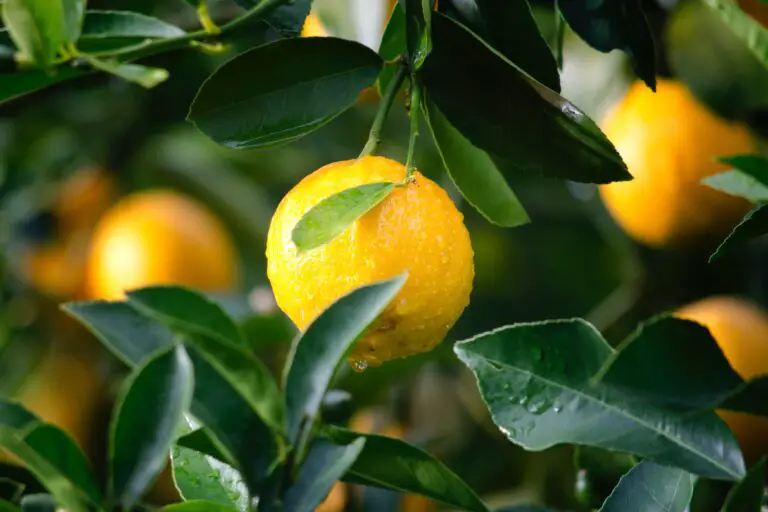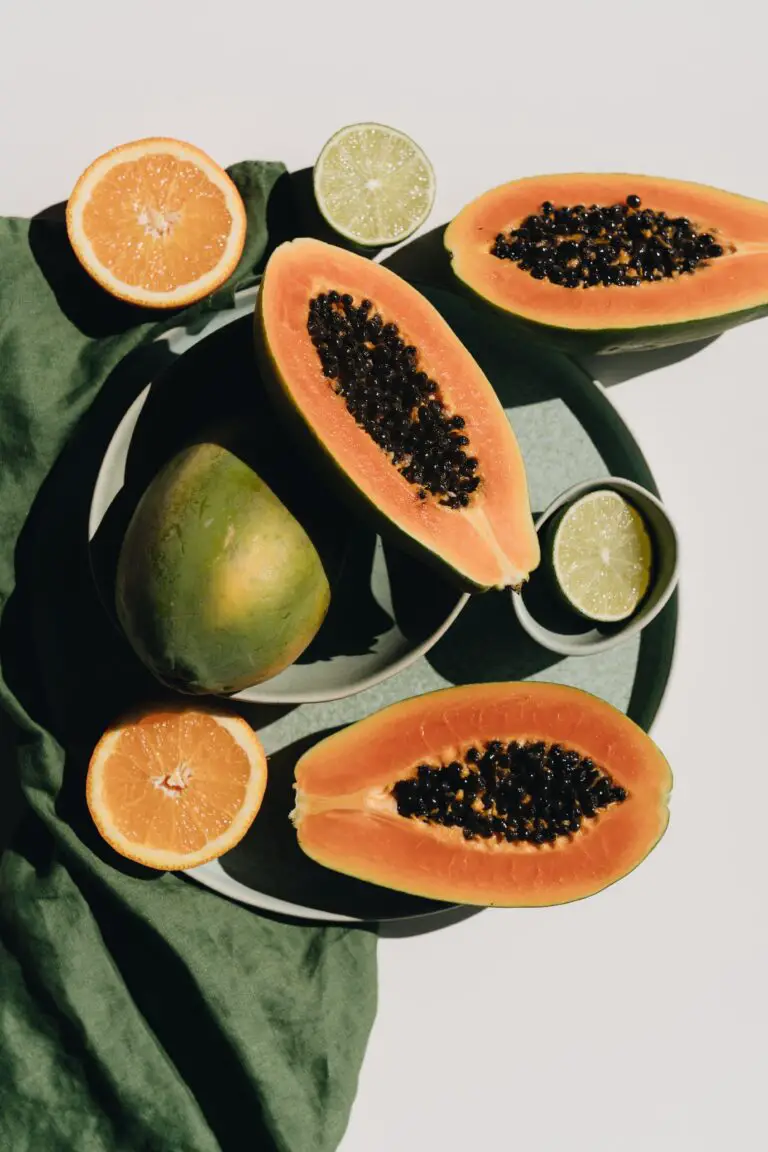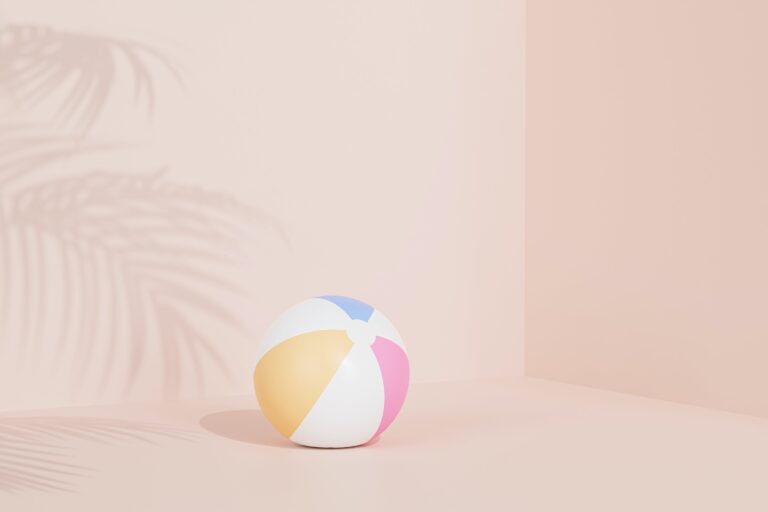Introduction to Sedum Lemon Ball
Imagine a burst of sunshine, a sphere of radiant lemony hues dotting your garden landscape or basking on your windowsill. That’s the Sedum Lemon Ball, a succulent that literally brings a splash of cheer wherever it resides. With its vibrant yellow-green foliage that glistens like little jewels under the sun, this plant has quickly captured the hearts of gardening enthusiasts all around the world.
Not only is it a delight to gaze upon, but Sedum Lemon Ball is a versatile performer, too. It adapts remarkably well to a variety of settings, be it a rock garden masterpiece or a simple indoor planter. Its easy-going nature and low-maintenance requirements make it a perfect companion for both seasoned green thumbs and horticultural novices alike.

For a more in-depth look at how this succulent thrives, click here to uncover the secrets to its care. Meanwhile, you can also explore the broader realm of succulents here, where a world of textured leaves and adaptable plants awaits. Whether you’re looking to brighten up a dim corner or add texture to your outdoor retreat, Sedum Lemon Ball’s effervescent charm is sure to captivate and inspire.
Why Choose Sedum Lemon Ball for Your Garden

Imagine stepping into a garden where bursts of lemon-lime hues blend seamlessly with an array of greenery, creating a tapestry of vibrant life. This is the visual poetry you can curate in your own backyard with the delightful Sedum Lemon Ball. While the garden is an escape, a vibrant color scheme captivates the senses and carries you to a place of serenity and bliss. Sedum Lemon Ball, with its lush, bright foliage, is a stunning candidate to infuse your personal oasis with an electrifying chromatic charm.
Not only does the sight of these succulents offer a refreshing visual feast, but their ease of care makes them a darling among garden enthusiasts. It’s not just about the vivacious color they bring; it’s also their resilience and adaptability that make them a practical choice for both beginners and experienced green thumbs. Engaging with your garden should be a joy, not a chore, and that’s precisely what the Sedum Lemon Ball promises – an encounter with beauty that requires minimal fuss. With a robust nature capable of thriving in varied climates, this succulent stands as a pillar of reliability.
The versatility of Sedum Lemon Ball truly shines when it comes to landscaping. Whether dotted along a rocky ledge, nestled within a quaint container, or blazing a trail as a ground cover, this plant consistently delivers lush greenery with minimal inputs. As holistic designers begin to embrace eco-conscious garden practices, versatile plants like Sedum Lemon Ball move to the forefront, showcasing that low-maintenance gardening can still yield breathtaking results. To learn more and get the best care tips for this lively plant, feel free to peruse expert guidance that can help you cultivate a thriving green space.
In essence, integrating the Sedum Lemon Ball into your garden is an investment in color, convenience, and creativity. It’s a choice that applauds both aesthetics and practicality, all while inviting nature’s spontaneity into the cultivated canvas of your garden. As one of the most adaptable and visually striking succulents, its inclusion transforms outdoor spaces into calming yet exuberant sanctuaries that resonate with life’s vivid pulse.
Planting and Soil Requirements
Ready to invite a sunburst of joy into your space with the charismatic Sedum Lemon Ball? Perfect! This succulent delight thrives when its soil and living situation mimick its native, rocky outcrops. Let’s get your hands dirty with some lighthearted planting wisdom that will ensure your Sedum Lemon Ball gets all the love it deserves.
First off, this lemony treasure adores a gritty, well-draining mix. Think about the rough terrain of a craggy cliff—this is the vibe you’re recreating. A commercial cactus or succulent mix is a fantastic starting point. If you’re feeling adventurous, or your green thumb is simply itchy for customization, create your own blend. Mix up some standard potting soil with coarse sand, perlite, or volcanic rock for that quick-draining homestead it’ll love.
When planting your Sedum Lemon Ball, consider its future spread; these guys like to stretch out and can create a green and yellow tapestry that resembles a lush, living carpet. So, give it a pot or garden spot where it can roam freely, or where its cascading foliage can drape elegantly over the edges. This guide offers more insight into ideal soil conditions that can contribute to your succulent’s success.
Speaking of spots, the ideal one for your sedum is a sunny little corner. Full sunlight fuels its growth and encourages the vibrant lemon color. However, if you’re in a particularly hot climate, a touch of afternoon shade won’t go amiss—it’ll protect the plant from scorching and keep the zest in its step.
Of course, watering is part of the deal, but with Sedum Lemon Ball, the mantra is ‘less is more.’ Ensure your pot has drainage holes worthy of an Italian colander. Soak the soil completely then step back and don’t water again until the soil is dry to the touch. Picture this: a parched desert eagerly awaiting a rare rainstorm—that’s how your Sedum Lemon Ball wants to feel between waterings.
By now, you might be wondering, ‘What does this all look like in real life?’ Well, you’re in luck! Embrace a little visual learning with this , which is brimming with tips and real-life demonstrations on cultivating these succulent wonders.
Last but not least, you have the reassurance that Sedum Lemon Ball isn’t fussy. It’s hardy, independent, and just like that one friend we all have who never seems affected by life’s curveballs, it almost thrives on neglect. Give it the right soil, a sprinkle of your attention, and a sunny high-five, and it’ll reward you with unwavering, never-fading vibrancy.
Sunlight and Watering Needs
Let’s get to the heart of what keeps the Sedum Lemon Ball as vivacious as a sunray! Think full sun – that’s the golden ticket to achieving the bright, eye-catching hue these hardy succulents are famed for. Picture a sunbather lounging under the azure sky, soaking in the warmth – that’s your Lemon Ball, basking in at least six hours of sunlight to maintain its vibrant wardrobe.
But, just like Goldilocks found her perfect fit, the Lemon Ball’s watering routine must be ‘just right.’ Imagine you’re mixing the perfect lemonade – too much water and it’s bland; too little and it’s too sharp. Here, we’re aiming for a ‘moist but not soggy’ mantra. When the soil is dry as a witty comeback, give it a thorough soaking until water dribbles freely from the drainage holes. Then, let it be. These plump beauties store water like camels in their leaves, so they’ll forgive you if you forget a drink or two.
If you’re eager for more insights into the captivating survival talents of these plants, why not explore our treasure trove of knowledge on succulent soil tips for perfect plant growth, where the gritty secrets to thriving gardens are unveiled?
Remember, overwatering is the Achilles’ heel of the otherwise indestructible Sedum. Frosting on a cake is delightful, but waterlogging in a pot spells disaster. Balance your watering with the weather and the Lemon Ball will repay you by flourishing into a lush, citrusy pompom that’s sure to be the talking point of your garden scape!
Pruning and Maintenance Tips for Sedum Lemon Ball
Just like a fresh haircut keeps us looking sharp, a good prune can make your Sedum Lemon Ball burst with lushness and charm. But don’t just take our word for it; let’s dig into the nitty-gritty of keeping these vibrant succulents in tip-top shape.
First things first, timing is everything when it comes to pruning. The best period for giving your Sedum Lemon Ball a trim is in early spring, just as the plant starts to wake up from its winter slumber. This is when the plant’s energy is surging, gearing up for a season of growth. This timing also allows you to get ahead of any potential disease or damage that might have occurred over the colder months.
How to Prune Your Sedum Lemon Ball
When you’re ready to prune, grab a pair of clean, sharp scissors or secateurs. Starting at the top, snip off any dead or damaged stems first. This isn’t just about aesthetics; it’s about diverting the plant’s focus to generating fresh, healthy growth.
Now for the encouraging part: to promote fuller growth, consider cutting back the leggy stems. Aim to make your cuts just above a leaf node—the little bumps where leaves emerge from the stem. This method stimulates the Sedum Lemon Ball to branch out and become denser, transforming it into a sumptuously full plant that’s a feast for the eyes.
But let’s not be too snip-happy. Pruning around one-third of the plant is a good rule of thumb to follow. Over-pruning can stress the plant and stifle its growth, so it’s all about finding that balance.
Imagine your Sedum Lemon Ball as a miniature shrub; you’re sculpting it into a dome of lemon-colored joy. Regular maintenance—plucking off dead leaves and spent flowers—keeps the plant’s energy directed toward thriving and spreading its vibrant charm even further.
Here’s a little real-world inspiration: think of how a well-maintained bonsai becomes more alluring with time, or a topiary in a classical garden becomes an evergreen artwork. Your Sedum Lemon Ball is no different—it has the potential to be the vibrant, sculptured gem of your succulent collection.
Don’t forget that after pruning, it’s crucial to give your plant a little extra TLC. Water it moderately and make sure it’s getting plenty of sunlight. Your Sedum Lemon Ball will thank you with a burst of lush, rejuvenated growth.

Remember, just like you relish a spa day or appreciate a refreshing drink on a hot day, your Sedum Lemon Ball also responds to that extra bit of care. With these simple pruning and maintenance tips, you’ll have a vivacious and robust succulent that’s sure to turn heads. So go ahead, get those pruning shears out and let the transformation begin!
Propagating Your Sedum Lemon Ball
Envision your garden brightened by the radiant hues of ‘Sedum Lemon Ball’—a succulent treasure with a zest for life that’s as effervescent as a spring morning. Ready to multiply the joy? Let’s dive into the world of propagation where your garden’s charm multiplies effortlessly!
Firstly, for those green thumb aspirants among us, you don’t need to be a horticultural wizard to get started. Propagation is surprisingly straightforward. You’ll need a pair of clean, sharp scissors or a knife, a healthy parent plant, and your sense of adventure. We’re not just growing plants here—we’re crafting a living mosaic in your very own backyard.

Begin by choosing a vibrant, robust stem from your existing ‘Sedum Lemon Ball’. Imagine this, like choosing the lead actor for your garden’s play—this cutting will set the stage for lush growth. Snip off a few inches from the tip, making sure there are several leaf nodes present. These nodes are like nature’s little growth engines, ready to burst into life.
Rooting the Cuttings
Place the cuttings aside to let the wounds heal over for a day or two; this is where patience is a virtue. A well-healed cutting leads to a staunch plant, much like letting dough rise before the bake. Next, you’ll want to nestle your cuttings into a mix of soil that’s equal parts grit and generosity. Moisten this abode for your baby ‘Lemon Balls’ and watch as roots eagerly seek out their new home.
Real-life tip: Remember that succulent enthusiast, Jamie? They rooted their ‘Sedum Lemon Ball’ in a quirky container they found at a yard sale, proving that sometimes, the best growth comes from the most unexpected places!
Keep your fledgling succulents in a spot where they can bask in bright, indirect sunlight. Direct sun can be harsh on tender, young plants—think of them like you would a newborn pup venturing out for the first time. Water them with a gentle hand; enough to quench their thirst, but careful not to drown their delicate roots in soggy soil.
Nurturing New Growth
Within weeks, you’ll notice the emergence of tender green roots, a sight as heartwarming as watching your child take their first steps. At this juncture, you’ll gradually introduce them to more sun, coaxing them to unfurl their foliage like a butterfly spreading its wings.
Once they’ve established a robust root system, transplant them to their final home. Whether that’s a terracotta pot by your kitchen window, a hanging basket adorning your porch, or peeking out between the rocks in a succulent tapestry, they’re sure to thrive under your loving care.
There you have it, fellow gardeners—a tale of propagation that’s as simple as it is satisfying. By following these steps, your ‘Sedum Lemon Ball’ will multiply, and in doing so, the sunny charm of this lemony gem will be a vivid thread woven into the fabric of your garden paradise.
Design Ideas with Sedum Lemon Ball
Envision your garden spaces and indoor plant arrangements adopting a vibrant, yellow-green glow with the introduction of Sedum Lemon Ball. This lively succulent forms a colorful mat of fine-textured foliage that’s as cheerful as a sunny day. But how do you incorporate such a zestful presence into your living spaces? Let’s explore.
Imagine a border that buzzes with life—the Sedum Lemon Ball is a prime candidate for creating an effervescent edge along pathways or garden beds. Its year-round color and low maintenance make it a popular choice for both newbie gardeners and savvy landscapers. Contrast is key in any composition; pair ‘Lemon Ball’ with darker foliaged plants like heucheras or ajugas, and you’ve got a picturesque play of luminosity and shadow.

Don’t just think horizontally—go vertical. Utilize ‘Lemon Ball’ in hanging baskets or wall-mounted planters. The cascading tendrils will create a waterfall of chartreuse, weaving a tapestry of color that breathes life into any bland fence or bare wall. Align several along your porch or pergola for a striking visual parade.
In the realm of indoor decorations, this succulent serves as a fantastic tabletop companion. Nest it amongst a cluster of terracotta pots filled with variably hued succulents for a captivating desert-scape right in your living room. The brightness of the ‘Lemon Ball’ pulls the eye, acting as a natural highlighter in your verdant collection.
For the culinary gardeners, slip the ‘Lemon Ball’ into your herb garden to introduce an unexpected pop of color among the greens. By marrying utility with aesthetics, your kitchen garden remains practical while becoming a talking point.
Finally, consider the ‘Lemon Ball’ for temporary seasonal displays. Its vibrant hue complements fall pumpkins and contrasts superbly with the reds and purples of common holiday decorations. Rotate it with seasonal companions to ensure your garden stays captivating year-round.
Thriving in Diversity
Whatever your garden theme or home style, the Sedum Lemon Ball is adaptable and versatile. Its globe-like shape and lemony palette segue flawlessly into every design scenario. Introduce this effervescent succulent into your spaces and watch as the charm unmistakably unfolds. Don’t let your designs go flat—elevate them with the dynamic and robust nature of the ‘Lemon Ball’.
Common Pests and Diseases
The vivid hues of Sedum Lemon Ball brighten any garden, but without proper care, this succulent beauty can fall victim to pests and diseases. Fortunately, with a watchful eye and the right know-how, you can keep your Sedum Lemon Ball thriving.
Aphids: The SAP-ucker Punch
Aphids are notorious for their love of succulents, and the Sedum Lemon Ball is no exception. These pesky insects drain the life-juices of your plant, causing stunted growth and deformed leaves. To tackle aphid invasions, a natural approach is often best. Introducing ladybugs into your garden can be a game-changer; these polka-dotted warriors have a voracious appetite for aphids!
Mealybugs: The Cotton-Clad Clingers
Mealybugs, resembling tiny bits of cotton, love to cling to the nooks and crannies of your Sedum Lemon Ball. They produce a sticky substance known as honeydew, which can attract ants and sooty mold. Treating mealybugs is a two-pronged approach—wipe them away with a cotton swab dipped in alcohol and spray your plant with neem oil to prevent future infestations.
Root Rot: A Silent Killer
Overwatering can spell disaster for your Lemon Ball. Excess moisture is an open invitation for fungi that cause root rot—a real stealthy killer. The trick to avoiding root rot is simple: let the soil dry out between waterings and ensure your pot has adequate drainage. Think of watering as a special treat, not a daily routine.
Invest in the habit of inspecting your Sedum Lemon Ball regularly, and act swiftly at the first sign of trouble. A little attention goes a long way in safeguarding your succulent’s vibrant charm!

Remember, the key to preventing these issues is to maintain optimal growing conditions. Correct soil choice, adequate light, and proper watering are your first line of defense against the dark arts of pests and diseases. Armed with this knowledge and a watchful eye, your Sedum Lemon Ball will continue to captivate with its lush, zesty vibrance.
Frequently Asked Questions
Are you charmed by the vibrant hues of the Sedum Lemon Ball? If you’re nodding in agreement, then you’ve probably got a laundry list of questions about this lush succulent. Don’t worry; you’re not alone! Let’s dive into some of the most common curiosities gardeners have about this sunny plant.

Is Sedum Lemon Ball Safe for Pets?
If your furry friends love frolicking in the garden as much as you do, it’s wise to ponder over the pet safety of your plants. Well, here’s some good news: Sedum Lemon Ball is non-toxic to cats and dogs! So while your four-legged pals explore, you can have peace of mind knowing that this succulent won’t harm them. Just keep an eye on zealous chewers—though not harmful, it’s not meant to be a pet snack!
How Does Sedum Lemon Ball Fare in Winter?
Winter can be a tough act for many plants, but the Sedum Lemon Ball is quite the resilient performer. Although it’s cold-hardy, it appreciates a little extra TLC when temperatures plummet. Tucking it in with a layer of mulch can help protect its roots from frosty toes. However, don’t let it sit soggy; these succulents prefer to stay on the drier side during the chilly months.
What Can I Expect When It’s Flowering Time?
When spring rolls around, your Sedum Lemon Ball is ready to put on a spectacular show with its starry flowers. These bright yellow blooms are not just pretty; they’re a buzzy hotspot for pollinators like bees and butterflies. Imagine your garden, aflutter with wings and awash with golden petals—it’s truly a sight to behold and a nod to Mother Nature’s artistry!
Engaging with the practical aspects of growing Sedum Lemon Ball, from keeping pets safe to winter care techniques, and anticipating the delightful floral display, can help you cultivate not just a garden, but a vibrant living tableau to enjoy year-round.